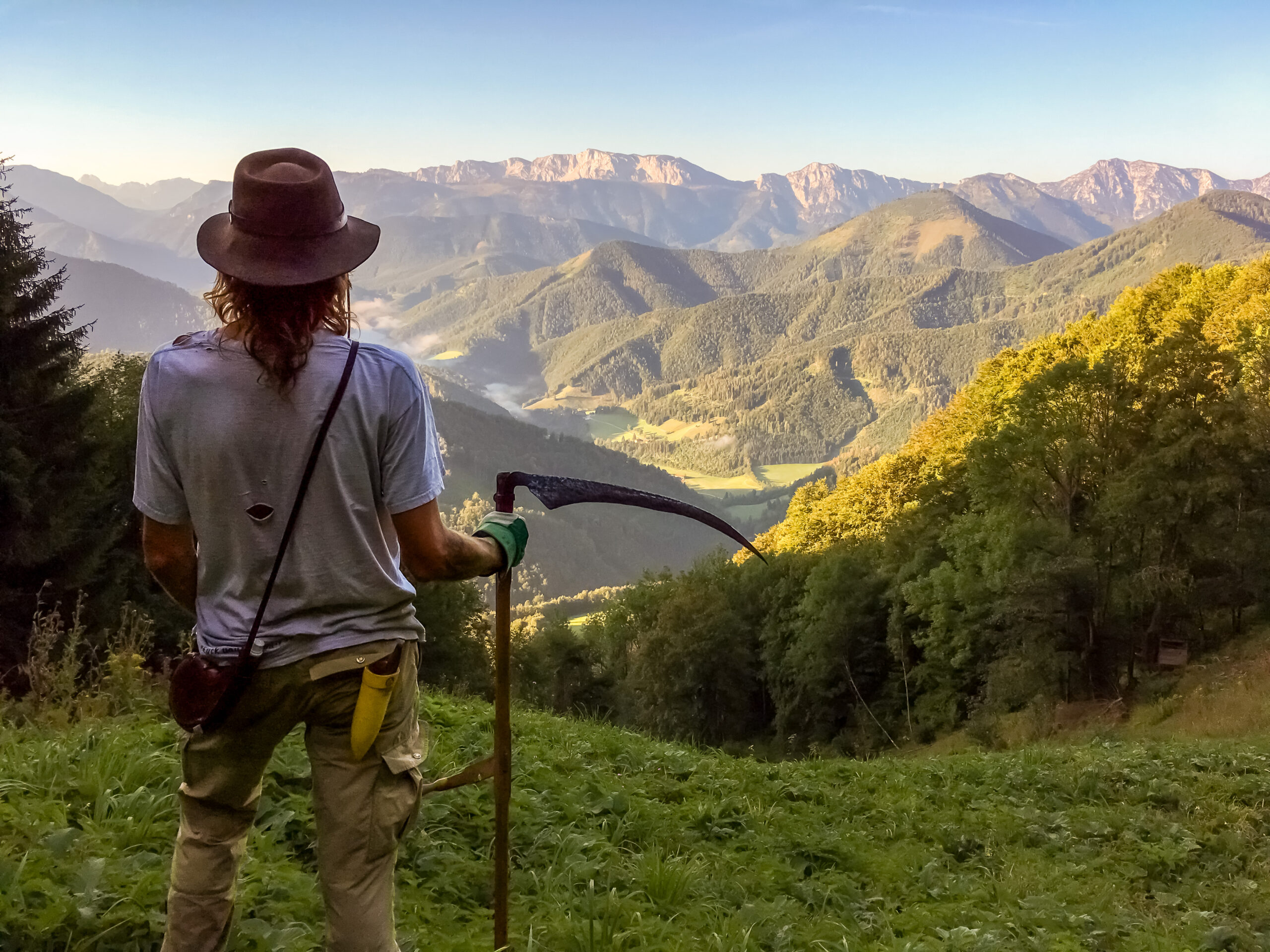For my master’s thesis from 2018 to 2020, I looked at mountain meadows in Molln (Upper Austria), which are maintained by the Bergwiesn landscape conservation association. The work was finally published in Stapfia in 2023 with the title Naturschutzfachliche Bewertung der Pflegemaßnahmen von Wiesen auf Steilflächen in Molln (Oberösterreich). The following is the abstract of this publication:
In the area around Molln (district Kirchdorf an der Krems) in Upper Austria, “Bergwiesn”, a private association with the objective of maintaining the cultivated landscape, takes care of more than 30 meadows in difficult and steep terrain. By annual mowing, they aim to keep the plots clear of encroachment and to remove nutrients. In the present study, 26 of those meadows were examined, in order to find out whether their vegetation matches that of nutrient-poor grassland on calcareous soil and whether the success of the maintenance measures can be statistically confirmed. Additionally, literature research was conducted on the feed quality of these meadows. The results show that more than a third of the plots match the vegetation of nutrient-poor grassland on calcareous soil, while the rest can be categorised as fertilised meadows. Yet, all meadows show key species of both vegetation types, and by continuous nutrient removal, fertilised meadows could be transformed into nutrient-poor grassland. Therefore, appropriate measures can contribute to the development of meagre meadows, which are particularly valuable in nature conservation terms. The statistical analysis yields no significant results. Looking at the feed value through conventional parameters, these meadows need to be given a rather low rating. Still, as an addition to conventional feed and for alternative uses (e.g. wellness purposes), hay from meagre meadows harbours some potential.
Publication in Stapfia:
https://www.zobodat.at/publikation_volumes.php?id=71956
Bergwiesn landscape conservation association:
http://bergwiesn.at/

